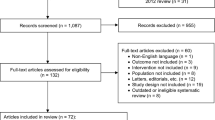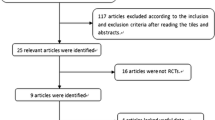Abstract
Overactive bladder (OAB) is characterized by involuntary detrusor contractions that result in bothersome urinary symptoms. The estimated US prevalence of OAB is 16% among men and 16.9% among women, comprising some 37.4 million Americans. The mainstay of treatment is medication. Although all drugs have variable degrees of efficacy and tolerability, several have emerged that yield good clinical results with tolerable side effects. This review focuses on two frequently prescribed drugs, solifenacin and tolterodine, and compares their clinical efficacy. A PubMed review was conducted with “solifenacin” and “tolterodine” as search words. Articles that compared the two medications were reviewed for content and number of study participants. Those with the most relevant findings and the highest number of participants were included. Both solifenacin and tolterodine show clinical efficacy for the treatment of OAB. Solifenacin seems to have better results in some series, with similar side effects. Antimuscarinic therapy is effective as OAB treatment. Both solifenacin and tolterodine have good clinical efficacy. However, in head—to-head trials, solifenacin seems to have somewhat better outcomes. Solifenacin, 5 mg, has less reported dry mouth than tolterodine, but at 10 mg, the incidence of dry mouth is similar.
Similar content being viewed by others
Abbreviations
- NOBLE:
-
National Overactive Bladder Evaluation
- SOLAR:
-
Solifenacin Alone and with Simplified Bladder Re-training
- STAR:
-
Solifenacin Versus Tolterodine Multinational Trial
- SUNRISE:
-
Solifenacin in the Treatment of Urgency Symptoms of OAB in a Rising Dose, Randomized, Placebo-Controlled, Double-Blind, Efficacy Trial
- VECTOR:
-
A Randomized Double-Blind Study to Assess the Safety and Efficacy of Solifenacin (Vesicare) in Comparison to Oxybutynin for Overactive Bladder Patients
- VENUS:
-
Vesicare Efficacy and Safety in Patients with Urgency Study
- VERSUS:
-
Vesicare Efficacy and Research Study US
- VICTOR:
-
Vesicare in Combination with Tamsulosin in OAB Residual Symptoms
References
Papers of particular interest, published recently, have been highlighted as: • Of importance
Ohtake A, Sato S, Sasamata M, Miyata K. The forefront for novel therapeutic agents based on the pathophysiology of lower urinary tract dysfunction: ameliorative effect of solifenacin succinate (Vesicare), a bladder-selective antimuscarinic agent, on overactive bladder symptoms, especially urgency episodes. J Pharmacol Sci 2010. 112(2): p. 135–41.
Abrams P, Cardozo L, Fall M, et al. The standardisation of terminology in lower urinary tract function: report from the standardisation sub-committee of the International Continence Society. Urol 2003. 61(1): p. 37–49.
Stewart WF, Van Rooyen JB, Cundiff GW, et al. Prevalence and burden of overactive bladder in the United States. World J Urol 2003. 20(6): p. 327–36.
Eglen RM, Hegde SS, Watson N. Muscarinic receptor subtypes and smooth muscle function. Pharmacol Rev 1996. 48(4): p. 531–65.
Kobayashi S, Ikeda K, Miyata K. Comparison of in vitro selectivity profiles of solifenacin succinate (YM905) and current antimuscarinic drugs in bladder and salivary glands: a Ca2+ mobilization study in monkey cells. Life Sci 2004. 74(7): p. 843–53.
Nilvebrant L, Hallen B, Larsson G. Tolterodine–a new bladder selective muscarinic receptor antagonist: preclinical pharmacological and clinical data. Life Sci 1997. 60(13–14): p. 1129–36.
Karram MM, Toglia MR, Serels SR, et al. Treatment with solifenacin increases warning time and improves symptoms of overactive bladder: results from VENUS, a randomized, double-blind, placebo-controlled trial. Urol 2009. 73(1): p. 14–8.
• Cardozo L, Hessdorfer E, Milani R, et al. Solifenacin in the treatment of urgency and other symptoms of overactive bladder: results from a randomized, double-blind, placebo-controlled, rising-dose trial. BJU Int 2008. 102(9): p. 1120–7. Solifenacin, 5/10 mg, was found to be significantly more effective than placebo in reducing the mean number of episodes of severe urgency with or without incontinence. Solifenacin was effective as early as day 3 of treatment.
Herschorn S, Stothers L, Carlson K, et al. Tolerability of 5 mg Solifenacin Once Daily Versus 5 mg Oxybutynin Immediate Release 3 Times Daily: Results of the VECTOR Trial. J Urol 2010. 183(5): p. 1892–1898.
Yamaguchi O, Marui E, Kakizaki H, et al. Randomized, double-blind, placebo- and propiverine-controlled trial of the once-daily antimuscarinic agent solifenacin in Japanese patients with overactive bladder. BJU Int 2007. 100(3): p. 579–87.
• Kaplan SA, Goldfischer ER, Steers WD, et al. Solifenacin treatment in men with overactive bladder: effects on symptoms and patient-reported outcomes. Aging Male 2010. 13(2): p. 100–7. In men without presumed bladder outlet obstruction, solifenacin significantly improved symptom bother, health-related quality of life, and overall perception of bladder problems. Solifenacin also improved mean scores on the OAB-q in these men.
Kaplan SA, McCammon K, Fincher R, et al. Safety and tolerability of solifenacin add-on therapy to alpha-blocker treated men with residual urgency and frequency. J Urol 2009. 182(6): p. 2825–30.
Khullar V, Hill S, Laval KU, et al. Treatment of urge-predominant mixed urinary incontinence with tolterodine extended release: a randomized, placebo-controlled trial. Urol 2004. 64(2): p. 269–74.
Malone-Lee J, Shaffu B, Anand C, et al. Tolterodine: superior tolerability than and comparable efficacy to oxybutynin in individuals 50 years old or older with overactive bladder: a randomized controlled trial. J Urol 2001. 165(5): p. 1452–6.
• Novara G, Galfano A, Secco S, et al. A systematic review and meta-analysis of randomized controlled trials with antimuscarinic drugs for overactive bladder. Eur Urol 2008. 54(4): p. 740–63. Extended-release formulations show some advantages over immediate release in efficacy and safety. A transdermal route of administration does not provide advantages over an oral route.
Peeker R, Samsioe G, Kowalski J, et al. A prospective observational study of the effects of treatment with extended-release tolterodine on health-related quality of life of patients suffering overactive bladder syndrome in Sweden. Scand J Urol Nephrol 2010. 44(3): p. 138–46.
Kenton K, Lowenstein L, Brubaker L. Tolterodine causes measurable restoration of urethral sensation in women with urge urinary incontinence. Neurourol Urodyn 2010. 29(4): p. 555–7.
Chung DE, Te AE, Staskin DR, Kaplan SA. Efficacy and safety of tolterodine extended release and dutasteride in male overactive bladder patients with prostates >30 grams. Urol 2010. 75(5): p. 1144–8.
Kaplan SA, Roehrborn CG, Rovner ES, et al. Tolterodine and tamsulosin for treatment of men with lower urinary tract symptoms and overactive bladder: a randomized controlled trial. JAMA 2006. 296(19): p. 2319–28.
Mattiasson A, Masala A, Morton R, Bolodeoku J. Efficacy of simplified bladder training in patients with overactive bladder receiving a solifenacin flexible-dose regimen: results from a randomized study. BJU Int 2010 105(8): p.1126–1135.
Klutke CG, Burgio KL, Wyman JF, et al. Combined effects of behavioral intervention and tolterodine in patients dissatisfied with overactive bladder medication. J Urol 2009. 181(6): p. 2599–607.
Bolduc S, Moore K, Nadeau G, et al. Prospective Open Label Study of Solifenacin for Overactive Bladder in Children. J Urol 2010. 184(4S): p. 1668–1673.
Reddy PP, Borgstein NG, Nijman RJ, Ellsworth PI. Long-term efficacy and safety of tolterodine in children with neurogenic detrusor overactivity. J Pediatr Urol 2008. 4(6): p. 428–33.
DuBeau CE, Kuchel GA, Johnson T, 2nd et al. Incontinence in the frail elderly: report from the 4th International Consultation on Incontinence. Neurourol Urodyn 2010. 29(1): p. 165–78.
Swift SE, Siami P, Forero-Schwanhaeuser S. Diary and patient-reported outcomes in patients with severe overactive bladder switching from tolterodine extended release 4 mg/day to solifenacin treatment: An open-label, flexible-dosing, multicentre study. Clin Drug Investig 2009. 29(5): p. 305–16.
• Chancellor MB, Zinner N, Whitmore K, et al. Efficacy of solifenacin in patients previously treated with tolterodine extended release 4 mg: results of a 12-week, multicenter, open-label, flexible-dose study. Clin Ther 2008. 30(10): p. 1766–81. Among patients with residual urgency after treatment with tolterodine extended release, 4 mg, solifenacin was associated with significant improvements in urgency and other diary-documented symptoms of OAB. Patients receiving solifenacin had significant improvements in health-related quality of life and the perceived bother of OAB.
Chapple CR, Fianu-Jonsson A, Indig M, et al. Treatment outcomes in the STAR study: a subanalysis of solifenacin 5 mg and tolterodine ER 4 mg. Eur Urol 2007. 52(4): p. 1195–203.
Chapple CR, Rechberger T, Al-Shukri S, et al. Randomized, double-blind placebo- and tolterodine-controlled trial of the once-daily antimuscarinic agent solifenacin in patients with symptomatic overactive bladder. BJU Int 2004. 93(3): p. 303–10.
Choo MS, Lee JZ, Lee JB, et al. Efficacy and safety of solifenacin succinate in Korean patients with overactive bladder: a randomised, prospective, double-blind, multicentre study. Int J Clin Pract 2008. 62(11): p. 1675–83.
Disclosure
No potential conflicts of interest relevant to this article were reported.
Author information
Authors and Affiliations
Corresponding author
Rights and permissions
About this article
Cite this article
Mongiu, A.K., Lerner, L.B. Clinical Differences Between Solifenacin and Tolterodine. Curr Bladder Dysfunct Rep 6, 1–6 (2011). https://doi.org/10.1007/s11884-010-0075-2
Published:
Issue Date:
DOI: https://doi.org/10.1007/s11884-010-0075-2




